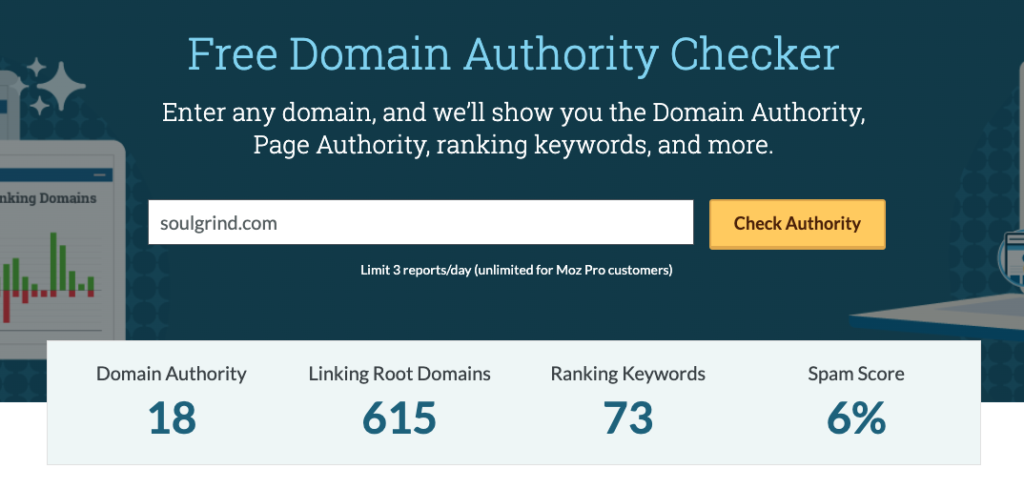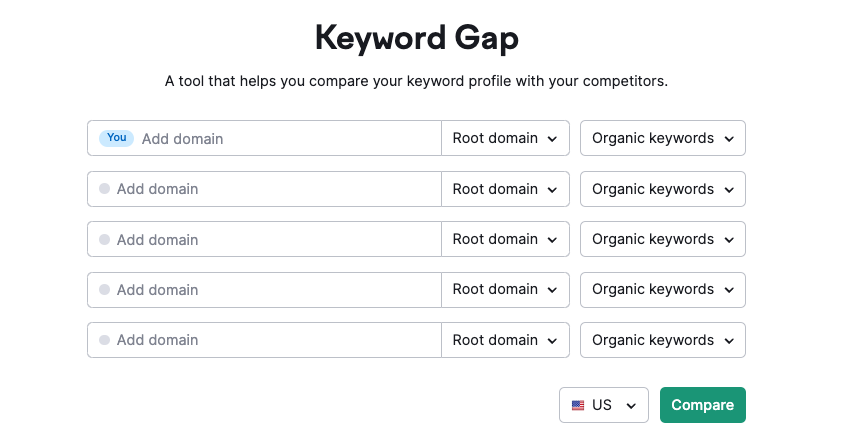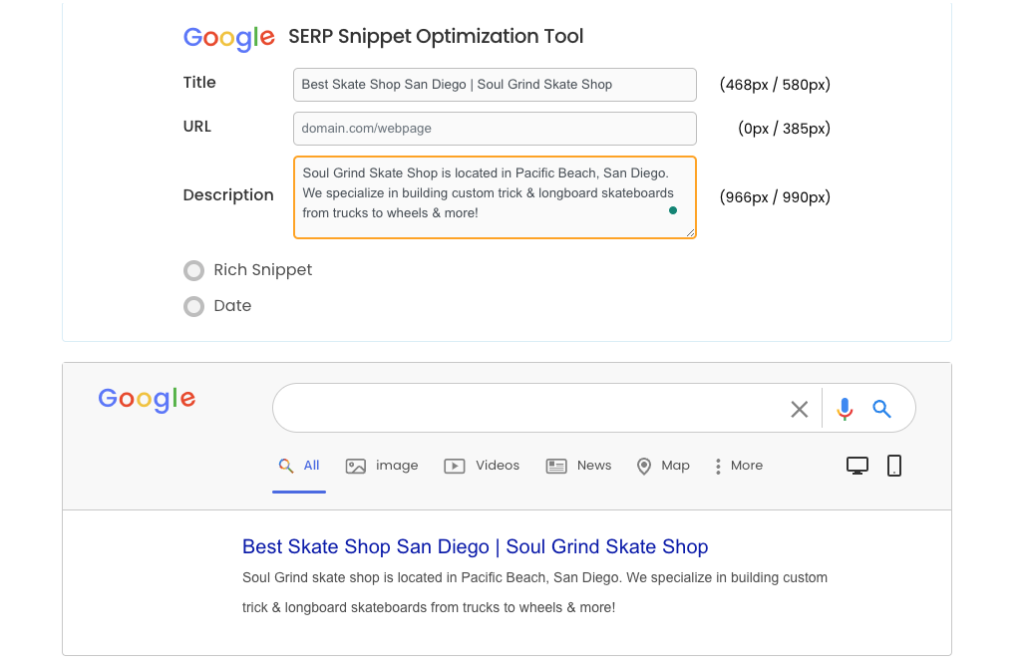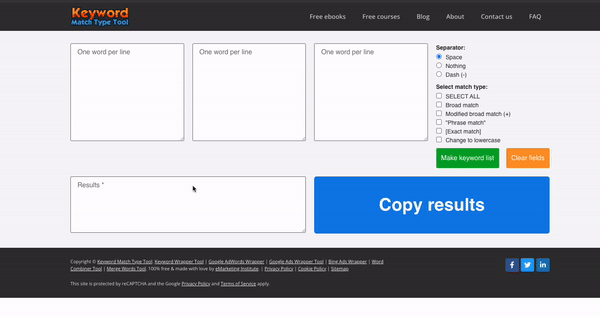Keyword research and keyword. mapping is the foundational cornerstone for any SEO campaign. It is a process of identifying and analyzing particular keyword phrases that people use to find a product, service, or more information about a specific topic. Website owners need to get in front of their users by finding the right set of keywords that potential customers are actively using to find relevant content, products, and services.
Keyword research is a process that is like matchmaking and building a house all at the same time. The goal is to identify specific keyword phrases that people are entering into Google and searching for and match those search terms with your product pages, blog articles, service offerings, or solutions.
The Four Main Concepts to Understand When Conducting Keyword Research
They are the following:
- Non-Branded Keywords vs Branded Keywords: Non-branded keywords are general terms excluding brand names, targeting a wide audience. Branded keywords directly mention a brand, appealing to those familiar with it, offering specificity in intent and relevance.
- Branded keyword example: Nike Running Shoes
- Non-branded keyword example: best running shoes
- Keyword Intent and Relevancy: Keyword intent and relevance are crucial in keyword research. Understanding user search intent and selecting relevant keywords that align with website content is essential for improving visibility and driving the right audience to a site.
- Keyword Search Volume: Keyword search volume signifies the average monthly searches (AVM) for a specific keyword. It is vital for gauging a keyword’s popularity and demand, aiding marketers in prioritizing their keyword targeting strategies according to search volume variations.
- Keyword Difficulty (KD): Keyword difficulty is a crucial metric that evaluates the level of competition in ranking for a particular keyword in search engine results. It helps assess the feasibility of targeting a keyword based on a website’s authority and its capability to compete effectively with other sites vying for the same keyword position.
Getting started on setting up your SEO campaign means mastering the balance between non-branded and branded keywords, understanding keyword intent and relevancy, analyzing keyword search volume, and evaluating keyword difficulty are key components of effective keyword research and SEO strategy.
Understanding User Search Intent
Search intent is described by Semrush as the following
“Search intent (also known as user intent) is the reason why a user types a particular query into a search engine. It represents what the user is trying to achieve with their search, whether that’s finding an answer to a question, looking for a specific website, purchasing a product, or exploring a topic.” Source
Search intent falls into the following categories:
- Navigational intent refers to users seeking a particular webpage, such as “Nike Running Shoes.”
- Informational intent is when users aim to acquire knowledge on a topic, like “the best running shoe.”
- Commercial intent involves users conducting research before buying, such as searching for “best-running shoe brand.”
- Transactional intent occurs when users intend to fulfill a specific action, typically a purchase, like searching for “buy Nike running shoes.”
Understanding the diverse intents behind keyword selection is important for shaping a keyword map that resonates with both search engines and users. By aligning keywords with specific search intents – such as informational, navigational, commercial, or transactional – businesses can tailor their web pages to meet user needs effectively.
This approach elevates your web pages’ relevancy to the target keyword giving your website a higher chance to rank in Google. With high rankings and relevant web copy matching your target keyword, you ultimately drive user engagement which should lead to more branded searches, more leads and more revenue. Integrating keyword research insights into content strategy allows brands to address user needs across the customer journey, from awareness to conversion. By
Understanding Keyword Difficulty
Semrush defines keyword difficulty as the following:
“Keyword difficulty (or SEO difficulty) is a keyword metric that indicates how difficult it will be to rank highly for the term in Google’s unpaid search results. It’s typically expressed as a percentage, with 100% indicating that the keyword is extremely competitive and it will be very hard to rank on Google’s first page.” Source
Factors that determine how difficult it would be for your website to rank for a keyword are the following:
That includes evaluating:
- Your competitor’s domain authority: Domain Authority (DA) is a metric created by the SEO company Moz. The definition of DA is the following: “Domain Authority (DA) is a search engine ranking score developed by Moz that predicts how likely a website is to rank in search engine result pages (SERPs). Domain Authority scores range from one to 100, with higher scores corresponding to greater likelihood of ranking.” So the higher your competitor’s domain authority is than your website, the hard it will be to rank. Check your domain and your competitor’s domain authority here.

- Your content’s quality: Google defines quality content as the following: “According to Google, quality content is “content that provides valuable information, is engaging and well-written.” In other words, your content should be informative, interesting, and well-crafted in order to be considered high-quality.” (Source)
- The keyword’s search intent: Tailoring content to match intent boosts user relevance and search rankings. Matching content with intent drives targeted traffic and enhances user experience.
- Your website’s backlink profile and domain authority: This is the same as knowing your competitor’s DA. You’ll want to compare your DA to your competitors and the SERP results to better understand your website’s ranking potential.
Setting Up Your Keyword Map and Master SEO Strategy
If you have your site up and running already, you’ll want to take inventory of all your main pages. Setting up a keyword map is the first step in getting started with your SEO Campaign and getting that ten thousand-foot view of your website.
I would start listing out the pages you want on your website. For example, if you want to sell handmade jewelry, you’ll want to list out your product pages and your core pages.
For example:
- Home page
- Shop
- Shop category pages
- Necklaces
- Rings
- Earrings
- bracelets
- About
- Blog
After you narrow down your web pages and business objectives, you’ll want to research to find focus keyword phrases. You want to pick keywords that tie into what your company is focused on and keywords that are relevant to new pages, such as service pages and blogs. Make sure to focus on non-branded keywords vs branded keywords. The main reason why it is better to use non-branded keywords is because these are the keywords that have never heard of your company. Focusing on a non-branded keyword strategy will help you raise brand awareness and will build up the search volume of your branded searches.
If you properly understand your business and your competitors, you will be able to more effectively define your product offering and attract your target audience on a broader scale. As you define your target keyword strategy, you will want to research keywords with a mix of intent including informational, navigational, transactional, and commercial keywords.
Getting Started with Building Your Initial Keyword List
Utilizing Keyword Research Tools
Keyword research is the backbone of any successful SEO strategy. It involves a thorough analysis of various aspects such as keyword data, keyword difficulty, and search intent to identify the right keywords to target.
A keyword explorer tool plays a pivotal role in this process by providing valuable insights into keyword ideas, phrases, and suggestions that can help optimize a website’s content for search engines. It allows users to delve into the depths of relevant keywords and uncover new ones that align with their content goals. By generating a list of keywords based on a seed keyword or topic, it helps content creators hone in on the terms that are most likely to drive organic traffic to their website.
Common Keyword Research Tools:
- Competitor Ranking Analysis – Keyword Gap Tool
- Google Ads Keyword Planner
- Semrush Keyword Magic Tool
- Moz Keyword Explorer
- Google Trends
- Google Suggest
Competitor Ranking Analysis
One of the first places I like to start is looking at competitor websites’ rankings. You can enter your competitor’s domain into a tool like Semrush’s organic research tool and see what keywords they are targeting. You can export this list and filter for search volume, keyword difficulty, and more. This intel is a great jumping-off point for getting an idea of how other sites are performing (or. not performing) in Google Search.

Hot Tip
Look at top industry publications in your niche to identify content topic ideas.
Reflect on your keyword ideas and all the information found from researching your competitors. Ask yourself these questions when evaluating competitor strategies. Which keywords are ranking higher for the competitors against your brand? Are there keywords you are not ranking for, but are ranking for the competition?
After conducting some competitor research, it’s good to build on that keyword list. Or on the other hand, if you can’t find the type of keywords you were looking for, you’ll want to get started creating your list using a keyword research tool.
Using the Google Ads Keyword Planner is a great way to get started when you don’t know where to start. The tool will generate a bunch of keyword ideas and group them automatically for you. You can also apply filters to narrow down your search. Using a keyword research tool helps with keyword lists and brainstorming keyword variations that you might not have thought of.
Hot Tip:
Use a keyword match type tool to generate a longer list to analyze. For example, if your seed keyword is “SEO” you can add a list of secondary variations like “consulting, services, consultant, company, etc. Using this tool will help you generate keyword lists faster.
Building an Initial Keyword List
When looking for a list of target keywords for your target URL, you’ll want to look at them thoroughly and ask yourself the following questions:
- Can the website rank?
- Is the keyword Difficulty score low enough?
- Is my DA high enough?
- Is the keyword relevant?
- Is the site already ranking for this keyword?
The ideal keyword criteria
- Low keyword difficulty
- High search volume
- Highly relevant
When conducting keyword research for your website, it’s crucial to approach it methodically and strategically by assessing keyword competitiveness to align with your site’s authority and content. Evaluating Domain Authority is vital for ranking potential and getting your website visibility in Google’s search engine.
Finding relevant keywords to your website’s content and target audience is key for keyword ranking performance. A holistic keyword research approach includes considering ranking potential, difficulty, Domain Authority, relevance, and current rankings to develop a robust strategy for enhanced visibility, organic traffic, and SEO performance.
Finalizing Your Keyword List Per URL
One major thing to note is that you’ll want your keyword list per page to be similar to each other. Each page has a purpose and that means each page has a target keyword, not multiple keywords that mean different things.
For example, your target keyword list for a single page should include the following:
- SEO services
- professional SEO services
- SEO services company
- website seo services
- professional SEO services company
- professional SEO services agency
- SEO services provider
Here is a keyword list example that is too spread out. These keywords are too different to target one page. Some of these keywords could be their page focusing on a specific type of SEO Service.
- e-commerce SEO services
- white White-label SEO services
- on-page SEO services
- small business SEO services
- technical SEO services
- enterprise SEO services
- international SEO services
By handpicking keywords that directly link to your products or services, you are essentially setting the stage for a more targeted and effective digital marketing campaign it’s essential to steer clear of keywords that lack relevance to your offerings or have low search volumes, as these may not yield the desired results. Instead, focus on incorporating high-value keywords that align closely with your brand’s unique selling points and objectives.
What Happens After Keyword Research? Keyword Mapping, Title Tag, and Meta Description Creation
Next, you’ll want to craft title tags and meta descriptions including your target keyword. The title tag should fit within the required character limits and you should have the target keywords as far as to the front of the title tag.
The meta description serves as short ad copy but will appear organically. This is your chance to explain more about what your webpage is about and entice potential users to click on your search results.
One way to make sure that your title tags and meta descriptions are within the required character length is to use a snippet editor Here’s one of my favorite snippet editor tools to use.

You’ll want to set up an SEO campaign in a SEO tool like Semrush to track your keyword rankings and organic search traffic performance. Semrush has great SEO reporting tools for you to set up regular reports for you or your clients.
Happy optimizing!
If you need some keyword research services please don’t hesitate to reach out!


